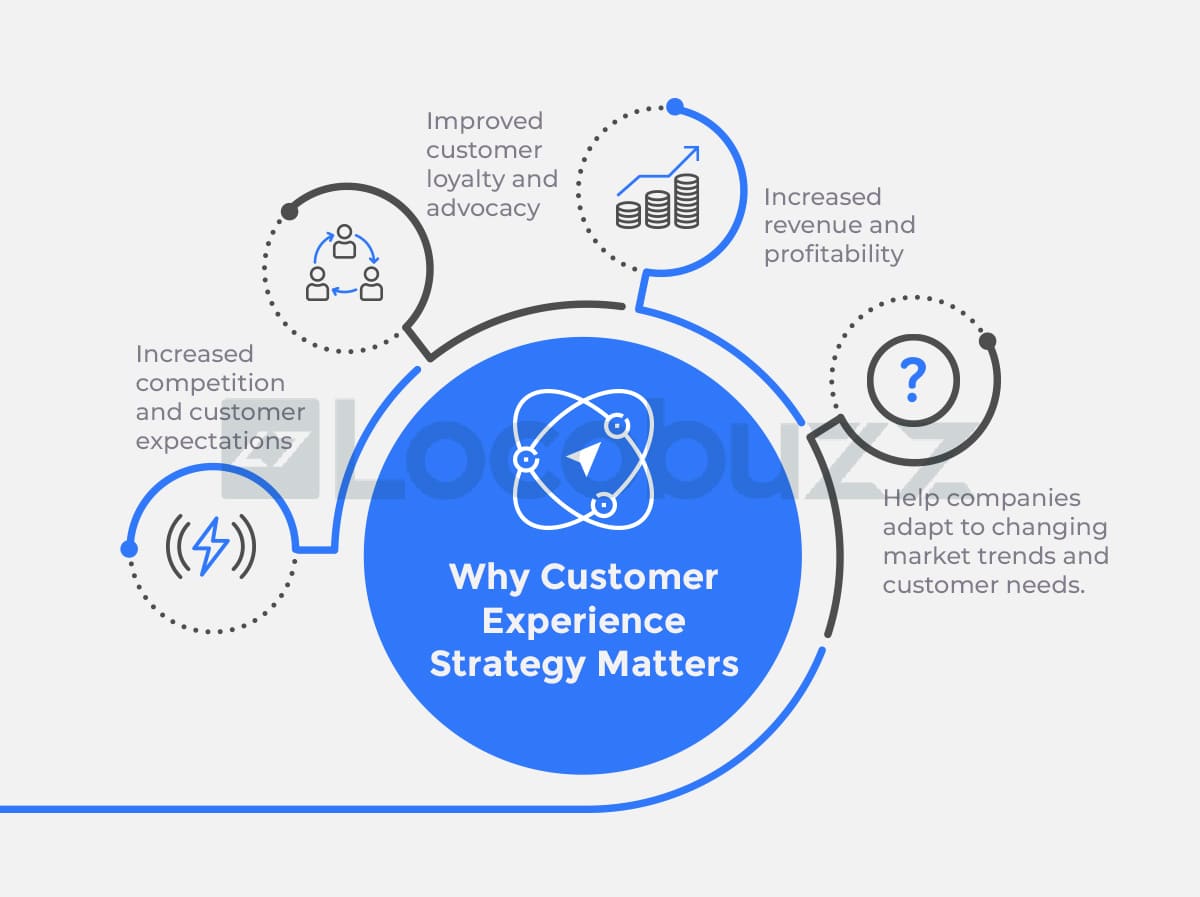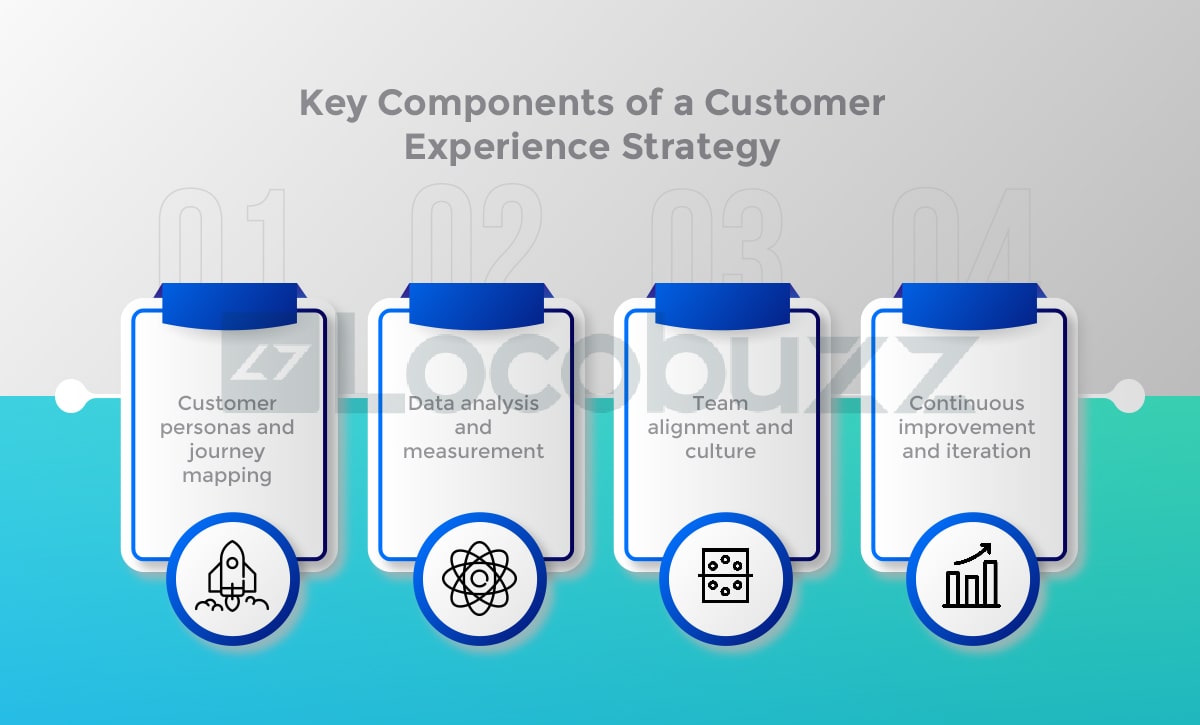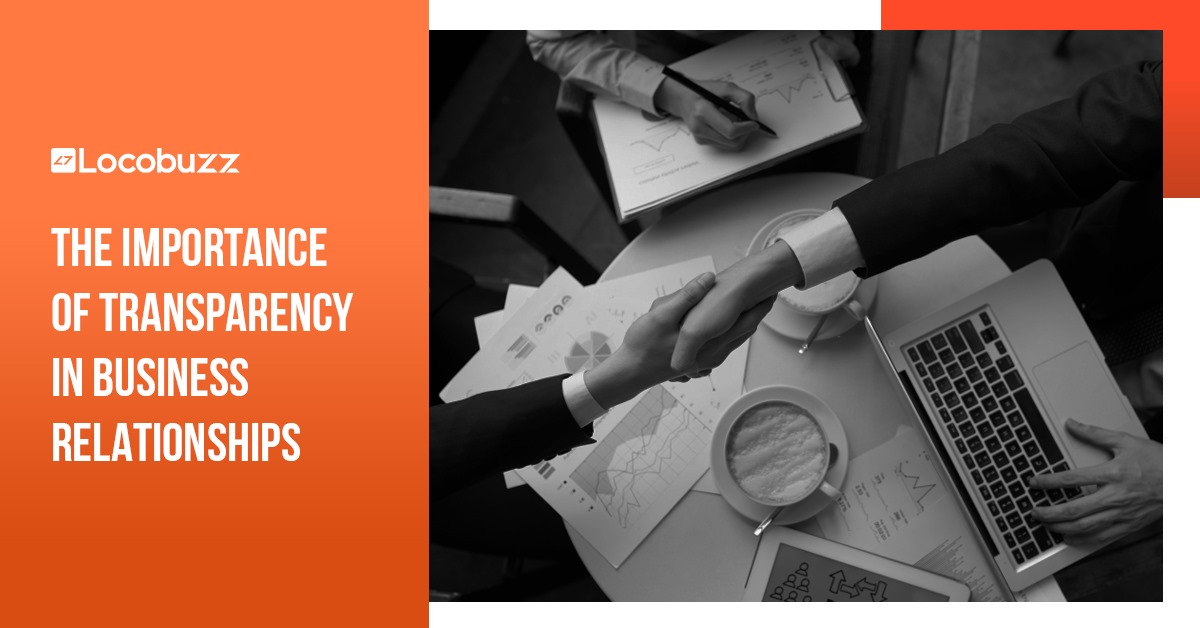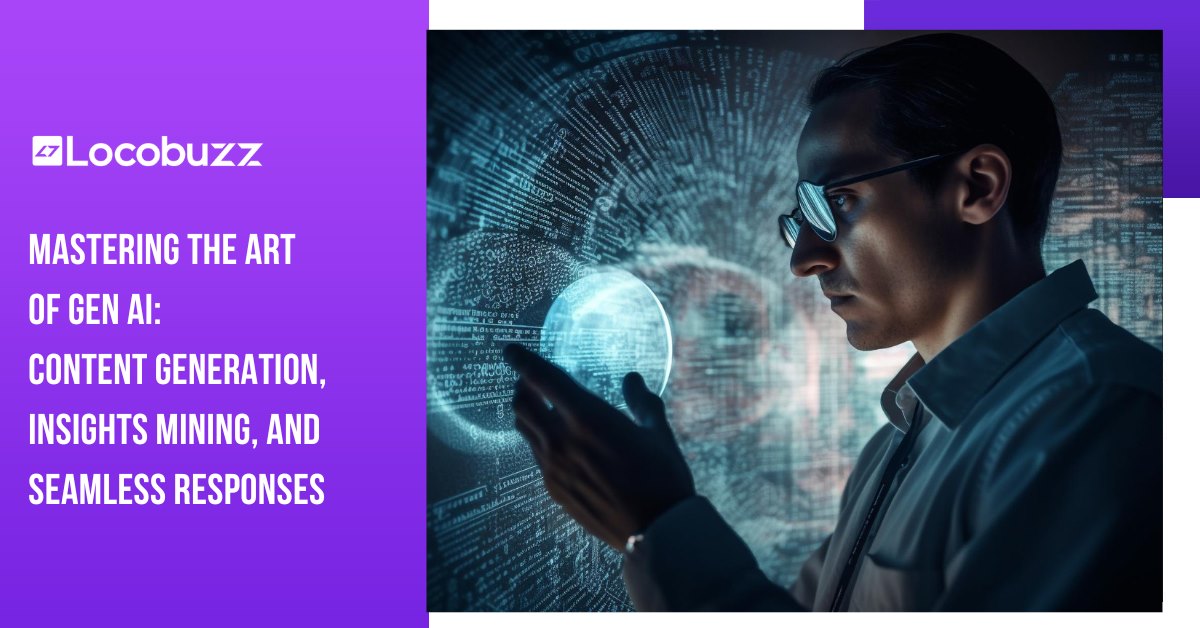What It Takes to Build a Customer Experience Strategy: The UItimate Guide
Table of Contents

No brand’s customer experience strategy is set in stone.
With rising customer expectations and technological advancements, customers want everything faster, conveniently, and affordably.
It is pivotal for brands to keep revisiting their customer experience strategy. In this dynamic landscape, using customer insights and driving customer feedback are important CX strategies.
Let’s understand how brands can improve the user experience, one strategy at a time.
What is the Importance of Customer Experience Strategy in Today's Business Landscape?
Customer experience strategy is crucial in today’s business landscape for:
- Improving customer satisfaction and loyalty: A well-designed customer experience strategy enables organizations to meet and exceed their customers’ expectations, leads to increased satisfaction and improved brand loyalty. When customers have a positive experience, they are more likely to return and recommend the business to others.
- Competitive advantage: In today’s competitive business landscape, an exceptional customer experience is a significant differentiator. Customers are more likely to choose a company that provides a better experience over one that does not, even if the products or services are similar.
- Increased revenue: When customers are satisfied, they tend to spend more money and buy more frequently. This translates to increased revenue and business growth.
- Better insights: A customer experience strategy can help businesses gather data and insights on their customers, allowing them to make more informed decisions about how to improve the experience.
- Improved reputation: Word of mouth is a powerful marketing tool, and a positive customer experience can lead to a strong reputation for the business. On the other hand, a negative experience can quickly spread through social media and other channels, damaging the brand’s reputation.
Long story short, a well-executed customer experience strategy can have a significant impact on a business’s success, including customer satisfaction, loyalty, revenue, and reputation.

How to Create a Customer Experience Strategy in 7 Ways
#1: Understand Who Your Target Audience Is + Create Accurate Buyer Personas
Conduct market research: This helps gather information about your potential customers, including demographics, psychographics, and consumer behavior. You can do this research through online customer experience surveys, focus groups, or social media analysis.
Analyze your current customer base: Look at the demographics of your current customers, their interests, and buying patterns. The end-goal is to understand who your target audience is and what they expect from your business.
Develop buyer personas: Once you have collected enough data, create buyer personas to represent different segments of your target audience. A buyer persona is a fictional character that represents your ideal customer. It includes information about their demographics, psychographics, interests, pain points, and goals, as shown below:Image Source
Use data analytics: These tools help track your website traffic, customer engagement on social media platforms, and audience behavior and preferences, enabling you to create more effective marketing strategies.
Stay up-to-date with market trends: Keep yourself informed about market trends, competitor activity, and industry news to stay ahead of the curve and understand the evolving needs of your user base.
Test and refine: Continuously test and refine your buyer personas based on new data and insights to stay relevant and effective.
#2: Analyze Your Organization’s Goals + Objectives
Understand the organization’s mission: Start by understanding the mission of your organization. What is the purpose of the organization, and what are its core values? This will help you understand the context in which the organization’s goals and objectives have been developed.
Review the goals and objectives: Review the goals and objectives of your organization:
- Are they clear and specific?
- Are they measurable?
- Do they align with the organization’s mission and values?
Make note of any gaps or areas that need further clarification.
Identify key performance indicators (KPIs): Identify the key performance indicators that are used to measure progress toward the organization’s goals and objectives. Some metrics you can use include revenue growth, customer satisfaction, employee retention, or market share.
Analyze the data: Once you have identified the KPIs, analyze the data to determine how the organization is performing against its goals and objectives. Look for trends and patterns in the data that can help you identify areas where the organization is doing well and areas where improvement is needed.
Develop an action plan: Depending on the areas identified, develop an action plan to achieve goals and objectives. You can set specific targets or milestones, allocate resources, or alter the way the organization operates.
Monitor progress: Finally, monitor progress against the action plan to ensure that the organization is moving in the right direction. Make adjustments as needed and continue to analyze the data to ensure that the organization is on track.
#3: Start From the End and Re-Trace Your Steps Related to the Customer Experience You Want to Deliver
This strategy involves identifying the desired end-state. To do this, the first step is to:
- Understand the end-state or the ideal experience you want your customers to have.
- Ask questions such as what do you want your customers to feel, think, or do after interacting with your brand? How will you help provide them this ideal experience?
- Once you have a clear picture of the desired end-state, you can work backward to figure out the steps needed to achieve it.
#4: Hire Team Players + Get Them to Collaborate
Look for candidates with a track record of teamwork: When reviewing resumes and interviewing candidates, look for evidence of collaboration. Seek out individuals who have worked on successful team projects, who have volunteered on committees, or who have contributed to group efforts.
Assess communication skills: When interviewing candidates, assess their communication skills, such as their ability to listen actively, express themselves clearly, and give and receive feedback constructively.
Consider personality and work style: This will help determine if a candidate is a good fit for your team or not. For example, an introverted candidate may prefer to work independently.
Promote a collaborative culture: Once you’ve hired team players, it’s important to create a collaborative environment by:
- Setting expectations that everyone works together
- Encouraging open communication
- Fostering a sense of camaraderie and organizing team-building activities and social events
- Providing opportunities for your team to collaborate, such as team projects or cross-functional teams
- Assigning tasks that require different skill sets to encourage team members to work together and learn from one another
- Acknowledging and rewarding collaboration, both individually and as a team
- Celebrating team successes and recognizing individual contributions
- Encouraging ongoing communication to maintain a collaborative environment
- Conducting regular team meetings and check-ins to help ensure everyone is on the same page and help identify and address any issues early on
#5: When It Comes to Design: Iterate Often, Iterate Early
Iterating designs often and early on is an essential part of the design process, as it allows you to refine your ideas, test different concepts, and identify potential problems before committing to a final solution. Here are some tips for iterating designs often and early on:
Start with low-fidelity designs: Begin the design process with simple sketches or wireframes that allow you to explore different concepts quickly and easily. Low-fidelity designs are easy to modify, and you can create multiple versions in a short period.
Get feedback early: Share your designs with colleagues, stakeholders, or potential users as early as possible to get their feedback. This will help you identify areas for improvement and guide your design decisions.
Create prototypes: Build prototypes that allow you to test your designs in the real world, which can be as simple as a paper mockup or as complex as a functional prototype. By testing your designs in the real world, you can identify issues early and make changes before it’s too late.
Embrace failure: Design is an iterative process, and you will likely make mistakes along the way. Don’t be afraid to fail, as each failure is an opportunity to learn and improve your designs.
Use design software: Design software can help you iterate designs quickly and efficiently.
Collaborate with a team: This will help generate new ideas, get feedback, and improve your designs. By working with others, you can bring different perspectives to the design process and make more informed decisions.
Set deadlines: Set deadlines for each iteration to keep the design process moving forward. Additionally, you can ensure you are making progress and avoid getting stuck in the design process.
#6: Use Automation + AI
Identify areas where automation and AI can be applied: Identify tasks and processes that are repetitive and time-consuming. Automating these tasks can free up time for more complex and strategic work.
Choose the right technology: When selecting between the automation and AI tools available, consider factors such as ease of use, compatibility with existing systems, and scalability.
Start small and test: It’s best to start with a small pilot project before rolling out automation and AI across the entire organization to identify issues or limitations and refine your approach.
Train your employees: Employees need to be trained on how to use automation and AI tools, understand its benefits, and learn how it can improve their work.
Monitor and refine: Once implemented, monitor AI performance and make adjustments as needed to optimize usage.
Use data to improve decision-making: Automation and AI generate large amounts of data, which can be used to make better decisions. Invest in the right tools to analyze and make sense of this data.
Ensure security and privacy: With the increased use of automation and AI, it’s important to ensure that data and systems are secure and that privacy is maintained.
#7: Understand the Important Customer Experience Metrics
Identify the right metrics: There are several customer experience metrics to choose from, such as Net Promoter Score (NPS), Customer Satisfaction Score (CSAT), Customer Effort Score (CES), and more. Identify the ones that are most relevant to your business and align with your customer service objectives.
Define benchmarks: Establish benchmarks for each metric to help you understand how well you’re doing compared to industry standards and your own past performance. Regularly track and analyze your results to identify areas for improvement.
Use a variety of data sources: Don’t rely on a single data source to assess customer experience metrics. Use a combination of customer feedback surveys, social media monitoring, and other customer interaction data to get a comprehensive view of your customers’ experiences.
Analyze trends and patterns: Look for trends and patterns in your data over time to identify areas for improvement. For example, if you notice a decrease in your NPS score, investigate the root cause to determine how to address the issue.
Take action: Use the insights gained from analyzing your customer experience metrics to drive action and improve your customer service. Consider implementing customer service training for your team, improving your product or service, or optimizing your customer service channels.
Communicate with your customers: Keep your customers informed about changes and improvements to your products or services. This not only shows your commitment to improving their experience but also helps build customer loyalty.

7 Best Practices for a Robust Customer Experience Strategy
- Map the customer journey: Create a customer journey map that outlines each touchpoint your customer has with your business. This map will help you identify areas where you can improve the customer experience.
- Use data to drive decisions: Collect data on customer behavior and feedback. Use this data to drive decisions about your customer experience strategy. You must also analyze data to identify trends, patterns, and areas where you can make improvements.
- Focus on personalization: Customers want to feel valued and appreciated. Use personalization to create a unique experience for each customer. This can include personalized offers, tailored recommendations, and customized content.
- Communicate clearly and consistently: Clear and consistent communication is essential for building trust with your customers. Ensure that your messaging is consistent across all channels and that your customers are always kept in the loop.
- Train and empower employees: Your employees are on the front line of your customer experience strategy. Train them to provide excellent customer service and empower them to make decisions that benefit the customer.
- Use technology to enhance the experience: Technology can be a powerful tool for enhancing the customer experience. Use tools like chatbots, social media, and mobile apps to make it easy for customers to interact with your business.
- Continuously improve and optimize your customer experience strategy: A customer experience strategy is not a one-and-done project. Continuously monitor customer feedback and data to identify areas where you can make improvements. Make changes to your strategy as needed to ensure that your customers are always receiving the best experience possible.
Wrapping Up
Having a customer experience strategy is essential for any business that wants to succeed in today’s competitive market. A well-conceived customer experience strategy can help businesses to:
- Build stronger relationships with their customers
- Increase customer loyalty
- Drive business growth
Start by understanding the customers’ needs and expectations. Gather data through surveys, focus groups, and other forms of customer feedback. With a clearer understanding, you can design a strategy that addresses your customer’s needs and expectations.
Finally, remember that important elements of a successful customer experience strategy include providing exceptional customer service, creating a seamless and intuitive customer journey, offering personalized experiences, and continuously seeking feedback and improving upon the customer experience.
With Locobuzz, a complete customer experience management platform, you can prioritize customer experience and put customers at the center of your strategy to emerge stronger (and more profitable).
FAQs
Why is customer experience strategy important?
How do you create a customer experience strategy?
To create a customer experience strategy, you need to:
- Define your target customers
- Identify their needs and pain points
- Map out their journey
- Design experiences that meet or exceed their expectations
- Align your organization’s culture, processes, and technology with the customer experience vision
- Monitor and improve the experience routinely
What are some common challenges businesses face when implementing a customer experience strategy?
Some common challenges businesses face when implementing a customer experience strategy include the following:
- Aligning the organization around the customer experience vision
- Getting buy-in from stakeholders
- Overcoming silos and bureaucracy
- Finding the right technology and tools
- Measuring the impact of the strategy
- Improving the experience consistently
How can a business measure the success of its customer experience strategy?
What role does technology play in customer experience strategy?
Technology plays a critical role in customer experience strategy by enabling businesses to:
- Collect customer data and personalize the experience
- Deliver seamless and consistent experiences across channels
- Automate processes
That said, technology should not replace human interaction and empathy, which are essential to creating a truly exceptional customer experience.






















